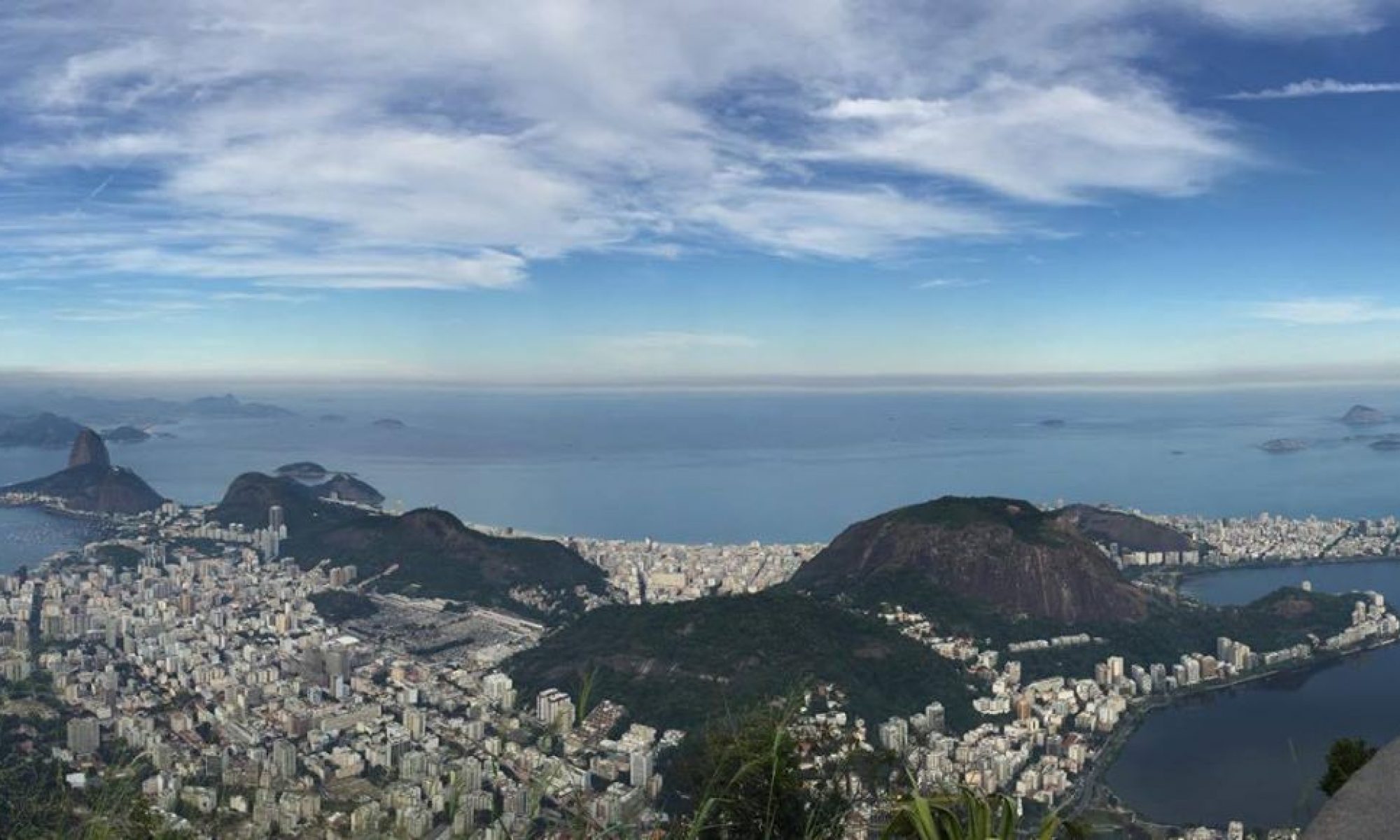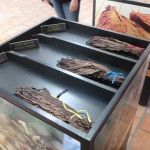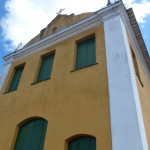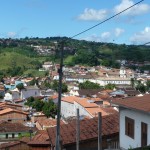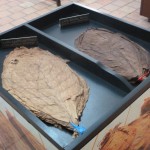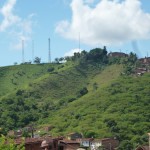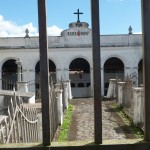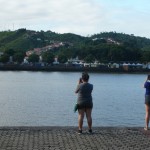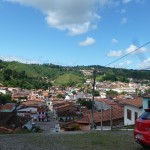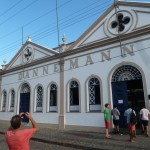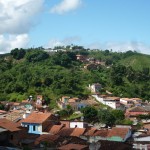June 20, 2015
By: Edgar Estrada
Today, the group was ready for action and exploration at 8:30am with a 4-hour bus ride to our destination Cachoeira, Bahia. The town is approximately located within 110 kilometers from Salvador and it is one of the most important municipalities of the Recôncavo Baiano (Bahian Bay Area). The Instituto do Patrimônio Histórico Artistico Nacional (National Institute of Historical and Artistic Heritage) recognizes and labels Cachoeira as a National Monument and Heroic City. Furthermore, Cachoeira contains a historical architectural landscape that preserves Colonial Brazil and makes it the second largest collection of Baroque architecture outside of Salvador. Furthermore, it played an imperative role in Bahia´s independence.
As we approached Cachoeira, there were a series of independent black female merchants on the sides of the highway selling freshly cut sugar canes in plastic bags. In an interesting socio-historical connection, it reminded me of the “sugar planting colonists”, specifically the Portuguese in Brazil, who controlled indigenous and African bodies to work the sugar cane plantations from the early 16th to late 19th century (Skidmore 2010, 34). Sugar cane remains and continues to be one of the few sources of income for many poor families who survive on agricultural produce.
Soon after arriving at Cachoeira, we stopped at a restaurant in a hotel called Pousada do Convento do Carmo a former convent. The food options included grilled beef, chicken, crab, and fish as the main entrée and sides of rice with Farofa (a toasted manioc flour that accompanies the rice), pinto beans, batata frita (french fries), steamed potatoes, carrots, cantaloupe, and green lettuce for salad. After the delicious lunch, the students were given a 10 minute break to walk around and stretch. During my break, I was intrigued and attracted by a small art shop that was inside the hotel. I was drawn in by the beautiful paintings depicting the Afro-Brazilian heritage, specifically African deities through vivid festivals and celebrations.
Little did I know that I was walking into the artwork of José Goncalves. José is a native of Cachoeira, Bahia, Brazil and has various sculptures and paintings exhibited in numerous museums and galleries throughout Brazil and his work has also been shown at the Smithsonian Institution´s Anacostia Museum in the United States. According to José, he has been painting and sculpting pieces of Afro-Brazilian culture since the age of seven. His artwork represents a great sense of pride and contribution to Cachoeira´s Afro-Brazilian history. He is widely known and recognized for his pieces Water Spirits and Orisha, which convey the celebration and festivities of Irmandade da Nossa Senhora da Boa Morte that are held in mid-August.
A popular Afro-Brazilian religion in Cachoeira, the Irmandade de Nossa Senhora da Boa Morte (Sisterhood of Our Lady of the Good Death), was created approximately 150 years ago in the living quarters of African slaves during the sugar cane plantations. The sisterhood was formed exclusively by Afro-women who wanted to free African slaves from the arduous and unhealthy living conditions on the plantations. After the abolition of slavery in Brazil in 1888, the sisterhood created a denomination from the Catholic Church and practices its religious traditions in four 18th century townhouse. The town is a great attraction to tourists because of the religious festivals, sponsored by the sisterhood, which involve special clothing, food, and rituals specifically connected to Candomblé, the Afro-Brazilian religion.
Cachoeira received the largest population of African slaves in the interior of Bahia. Subsequently, it contains a rich diversity of contemporary culture inspired by the mixture of Native, African, and European communities. Cachoeria won national recognition for its influential role through political leadership during the Independence of Brazil and Bahia during the 19th century. On June 25, 1822 Cachoerians developed and utilized a resistance movement to fight against Portuguese colonizers and declared Cachoeria free from Portuguese control and settlements. This strategic move allowed indigenous and African slaves in Brazil to create a vision of hope for a future of autonomy through liberty.
Cachoeira is highly influenced and shaped by African culture, particularly the Bantu-community of Sub-Saharan Africa and the Yoruba from West Africa which were a prominent labor force in the sugarcane mills of Bahia. The town is located around the Rio Paraguaçu (Paraguaçu River).
We arrived to Cachoeira during a good time of the year. The ambience was lively with people lighting up fireworks, drinking traditional Brazilian flavored liquors, and eating at local food stands. The Festa Juninha (June Festival) was in session and people were celebrating the Festa de São João (Festival of St. John). Festa Juninha is an annual Brazilian celebration consisting of a series of daily festivals during the month of June, originally introduced by the Portuguese colonizers through the Catholic religion, where the nativity of Saint John the Baptist, Saint Anthony, and Saint Peter are celebrated. Comparable to fairs in the United States, the festival included mechanical rides, food stands, games, and live music. In all, our day was an amazing experience that took us back one century into the religious festivals of the Afro-Brazilians in Cachoeira.
–
Skidmore E. Thomas. 2010. Brazil: Five Centuries of Change. pg. 34 New York: Oxford University Press.
